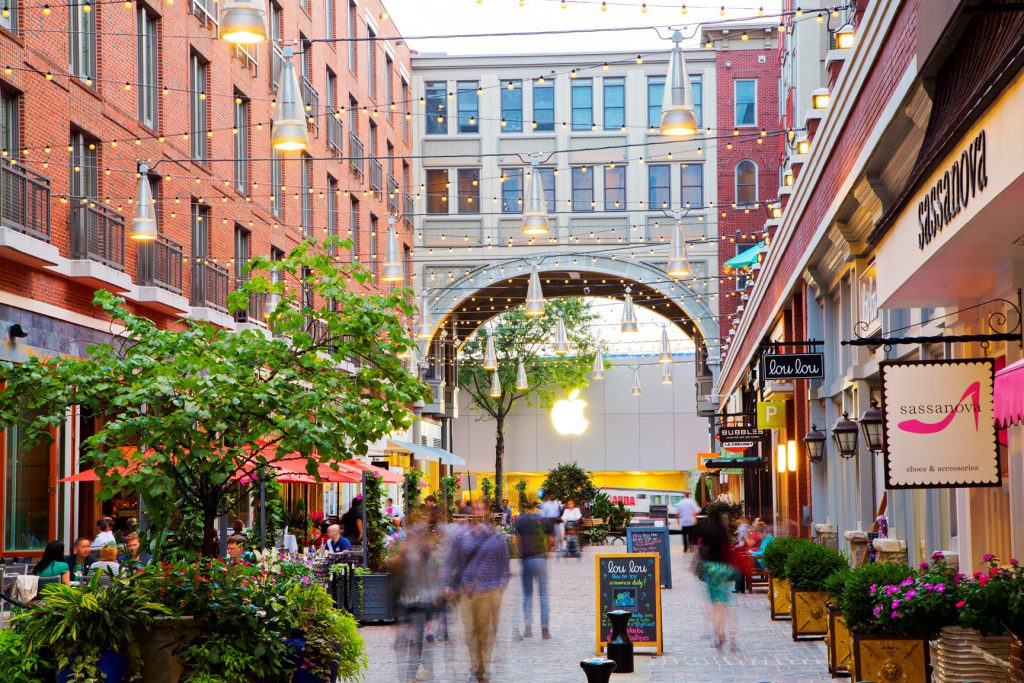Think back to your favorite 80’s movie and chances are there was a scene shot in a shopping mall. The ‘Twin Pines Mall’ serves as the setting for Marty McFly’s journey back in time. Bill & Ted’s Excellent Adventure goes awry when Genghis Khan tears apart a mall. The students of Ridgemont High spent more time at the food court than in class. For the millennials and Gen-Xers among us, the gradual extinction of the enclosed mall is bittersweet.
The numbers speak volumes: Only nine traditional malls have been built in the US since 2010, compared to 108 in the previous decade, according to CoStar. There’s an entire website devoted to reliving the glory days of empty malls across the country.
It’s no secret how we ended up here. The Internet has allowed consumers to shop on their terms with the swipe of a finger; today’s teenagers are getting their kicks on social media platforms; and retailers are contending with the rising cost of operating large stores and sprawling distribution channels.
If any sector of real estate has been disrupted, it’s retail – and Miami is fast emerging as the industry’s proving ground.
Developers are pumping billions into ‘retail-driven lifestyle centers’ that emphasize experiences and community over the physical act of shopping. Authorities in downtown Miami are upping the ante with publicly-funded streetscape improvements designed to lure new brands (and consumers) to Miami’s ‘main street.’ And some of the most sophisticated owners of retail real estate in the world are investing here.

The highest profile examples of this shift are unfolding in downtown, where surging population growth is sparking a wave of retail development unlike anything the city has seen. At the 27-acre Miami Worldcenter development, plans for a ‘High Street’ retail promenade were recently unveiled. The vision involves an open-air concourse of shops, dining and entertainment options that’s part Lincoln Road, part 5th Avenue and part SoHo.

A few blocks south, construction is underway on a series of street-level improvements along Flagler Street that will restore downtown’s main thoroughfare as a shopping and dining destination. It’s good timing: a new report by the Miami Downtown Development Authority found that retailers in the urban core are generating sales in excess of $500 per square foot, a benchmark that’s capturing attention among the world’s biggest brands.
Downtown Miami isn’t the only neighborhood experiencing a retail awakening. Wynwood and the Design District are becoming lifestyle destinations in their own right, and we’re seeing similar activity bubble up in Coconut Grove and South Miami, where Federal Realty and its partners recently purchased commercial anchors CocoWalk and Sunset Place. Federal’s grand plan is to create more integration between its properties and the surrounding neighborhoods, a model that has proven successful for the firm in other cities.

Federal Realty’s Bethesda Row shopping center in MarylandThe common thread in these examples is an emphasis on human interaction against the backdrop of authentic environments, as opposed to the malls of old, which were primarily a vehicle for consumerism. Federal executive vice president Chris Weilminster sums it up perfectly: “People want to be immersed when they shop. You have to create something experiential to get them off the couch and off the Internet.”
For all the advances we’ve seen in retail since the advent of online shopping, the industry’s shift toward destination-oriented centers is unfolding at a surprisingly fast pace. With more value being placed on experiences over transactions and the biggest names in real estate leading this trend, we can’t help but wonder if the Internet’s grip on retail is destined to loosen. All eyes will be on Miami as the experiment plays out over the coming years.
READ RELATED: Miami commercial real estate undergoes the perfect storm







 See More Blogs
See More Blogs
Comments